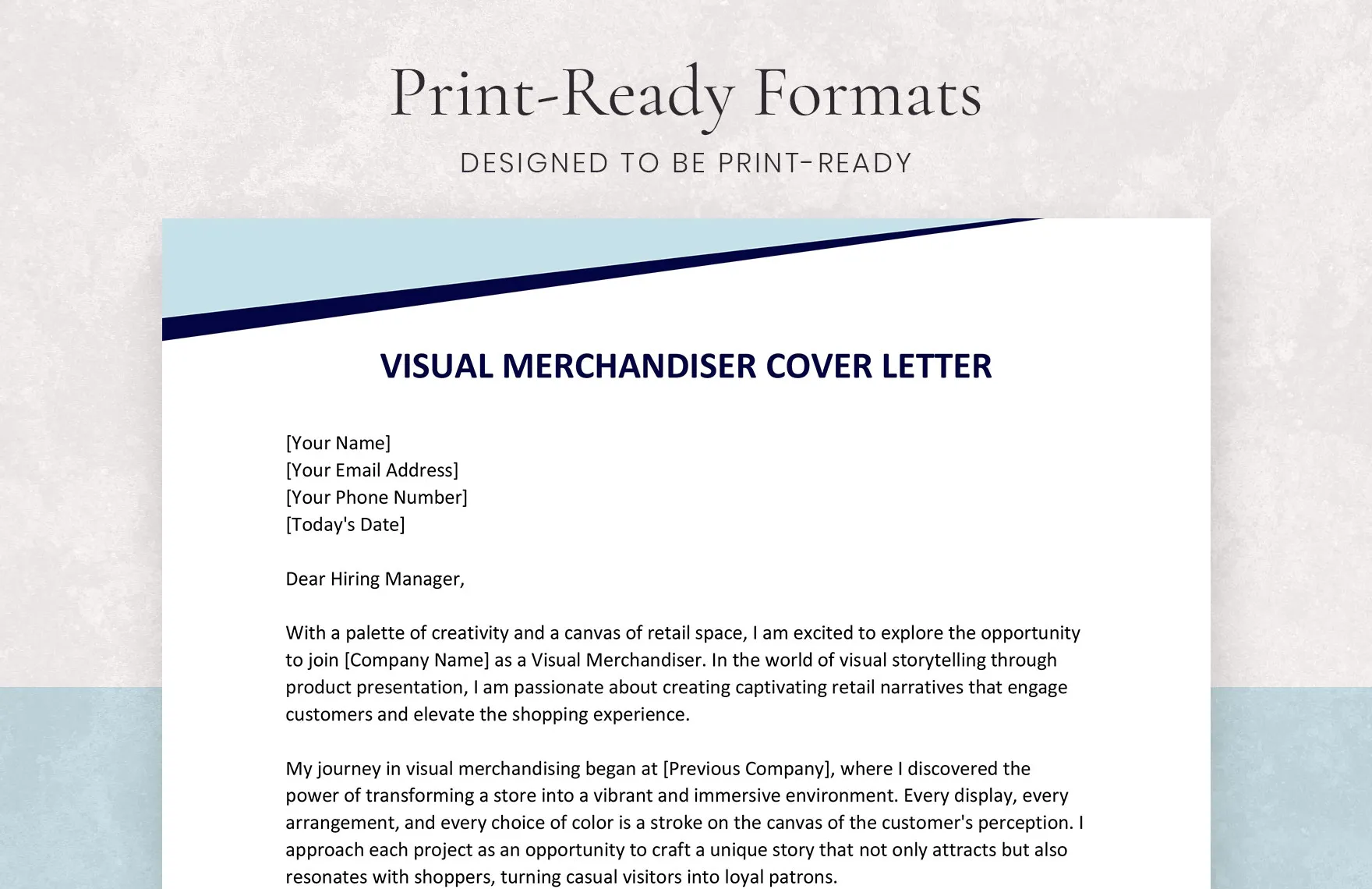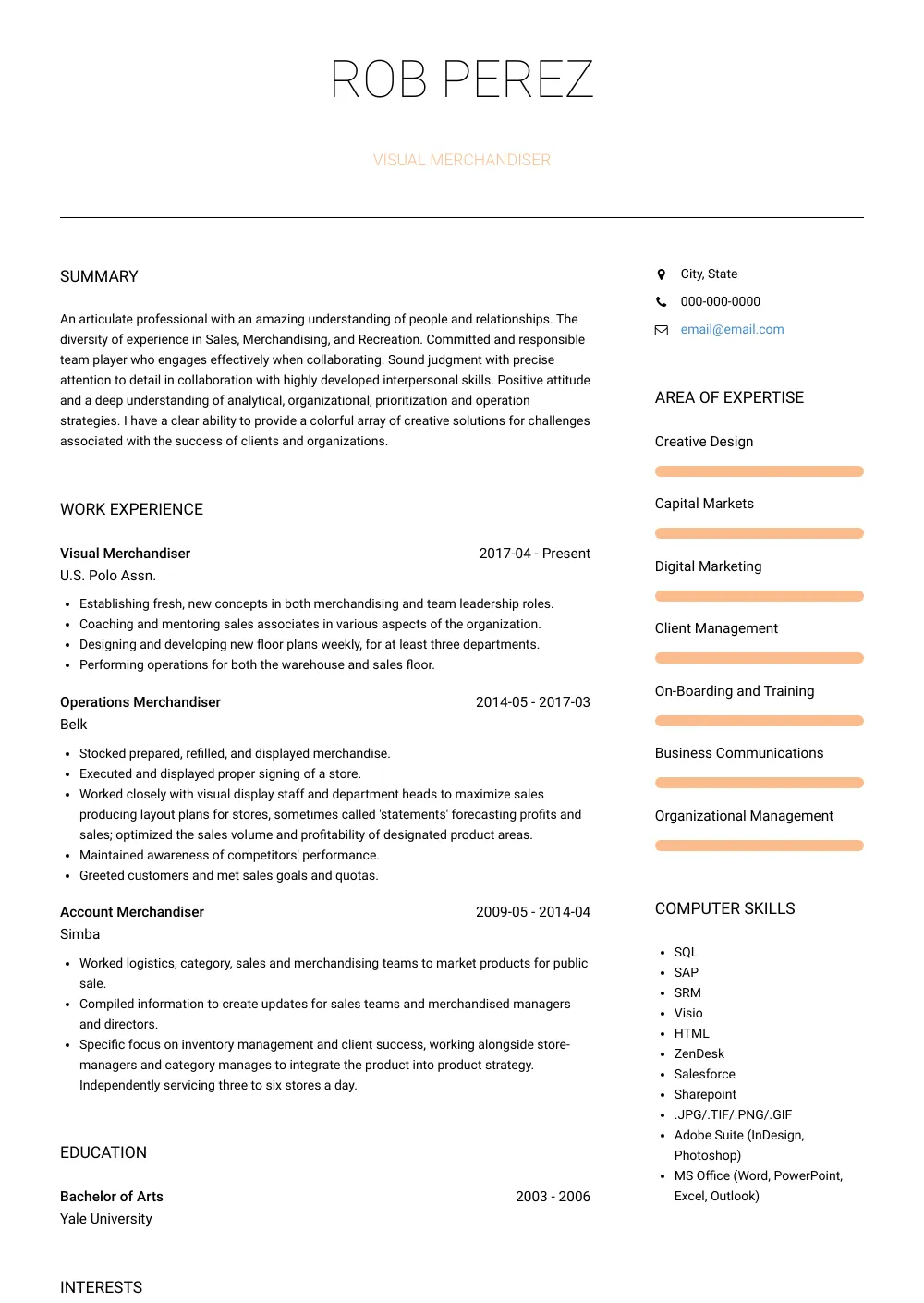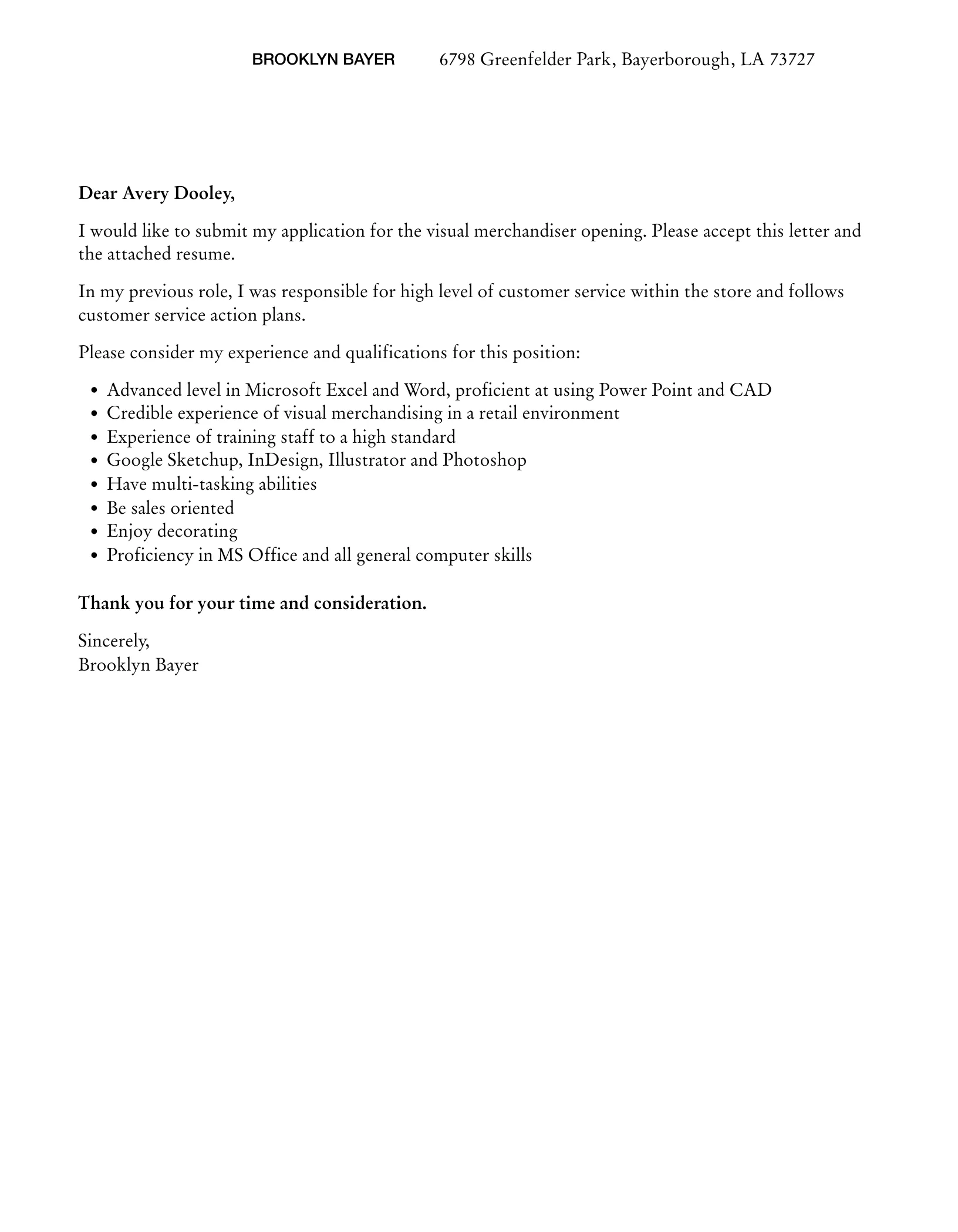Crafting a Compelling Cover Letter Visual Merchandiser
A cover letter is your first opportunity to impress a potential employer, so it must be meticulously crafted to highlight your unique skills and experiences. For a visual merchandiser, this means going beyond a generic application and showcasing your understanding of retail aesthetics, customer engagement, and brand storytelling. Begin by clearly stating the position you’re applying for and where you saw the advertisement. Immediately capture the reader’s attention by stating your enthusiasm and how your skills align with the company’s needs. Use concise language that immediately communicates your value proposition. Ensure your cover letter is tailored to the specific job requirements. Avoid generic templates; instead, personalize each letter to reflect your understanding of the role and the company’s brand. Emphasize your passion for visual merchandising and your ability to create compelling displays that drive sales and enhance the customer experience.
Highlighting Your Visual Merchandising Skills
Your cover letter should be a showcase of your core visual merchandising skills. Clearly articulate your abilities in areas such as space planning, product placement, and creating visually appealing displays. Mention your proficiency in understanding color theory, lighting techniques, and how they impact the overall shopping experience. If you have experience using design software or tools such as Adobe Creative Suite or CAD, be sure to mention these as they demonstrate a more comprehensive skill set. Showcase your knowledge of current retail trends and your ability to incorporate them into your designs. For example, how do you incorporate sustainable practices into your merchandising efforts or how do you use technology (digital displays, interactive kiosks) to enhance visual presentations? This shows you’re not only skilled but also forward-thinking. Ensure your skills align with the requirements of the job description; this indicates that you’ve carefully read and understood the specific needs of the position.
Showcasing Your Creativity

Visual merchandising is a creative field, and your cover letter needs to reflect your imaginative capabilities. Describe specific projects or displays you have designed that demonstrate your creativity. Explain the concept behind each display, the target audience, and how it aligned with the brand’s objectives. Include details about how you incorporated innovative elements to capture customers’ attention and drive sales. Consider using storytelling to bring your ideas to life. Describe how a particular display increased foot traffic, improved sales, or garnered positive customer feedback. If you have a portfolio (and you should), explicitly mention it and invite the hiring manager to view your work. A well-presented portfolio is crucial for showcasing your design skills and the visual impact you can create. Highlighting your creative process, and the results of your design efforts, paints a clear picture of your talents and abilities.
Quantifying Your Achievements in Visual Merchandising
Instead of simply listing your responsibilities, use your cover letter to quantify your successes. Provide specific examples of how your work has positively impacted previous employers. Did your displays lead to an increase in sales? Did they help improve customer engagement? Use concrete numbers and data to demonstrate your achievements. For instance, mention the percentage increase in sales due to a seasonal display you designed or the number of customers who interacted with a specific installation. If you received any awards or recognition for your work, be sure to include these details. When discussing project results, specify the timeframe and the context in which the achievement occurred. Did you reduce costs, improve efficiency, or meet specific targets? Provide detailed metrics to showcase your proficiency and your value to the potential employer. Quantifiable evidence significantly strengthens your claims and proves the impact of your visual merchandising work.
Mentioning Relevant Experience
Highlight your relevant experience to show your suitability for the role. Focus on past roles that directly relate to visual merchandising and retail design. Briefly describe your responsibilities and what you accomplished in each position. Mention the brands or retail environments you have worked with, as this can add credibility and demonstrate your versatility. If you’re transitioning from a related field, make sure to explicitly state how your skills are transferable. Perhaps you have experience in graphic design or event planning that can inform your visual merchandising abilities. Even if you lack extensive experience, you can still effectively showcase your skills. Include any internships, volunteer work, or personal projects that demonstrate your passion and capabilities in visual merchandising. Detail specific projects, showing the steps you took, your creativity, and the lessons you learned. Tailoring your experience to match the job requirements ensures the hiring manager understands your fit for the role.
Tailoring Your Cover Letter to the Specific Job

Customizing your cover letter for each job application is essential. Generic cover letters lack the personal touch and may appear as though you haven’t thoroughly reviewed the job posting. Carefully read the job description and identify the specific skills and experiences the employer is seeking. Use the language from the job description in your cover letter to demonstrate you understand the role. Address the specific needs of the company and highlight how your skills and experience align with those requirements. Mention any specific design trends or the brand’s aesthetic that resonate with you. Show the employer that you are passionate about their company and have taken the time to learn about their brand. Personalize your letter by including the name of the hiring manager if possible, and avoid using generic greetings. This shows that you are genuinely interested in the position and have the initiative to go above and beyond.
Researching the Company and Its Values
Before submitting your cover letter, conduct thorough research on the company. Visit their website, social media profiles, and any other relevant online platforms. Understand the company’s brand identity, values, and the types of products they sell. Learn about their current visual merchandising strategies and recent campaigns. This knowledge allows you to tailor your cover letter to align with the company’s specific needs. Mention any specific details you’ve learned about their current displays or marketing initiatives, demonstrating your interest and your understanding of their brand. If you have an idea for how you can improve their merchandising strategies, consider adding a brief suggestion. Showing that you are knowledgeable about the company and its goals showcases your initiative and your genuine interest in the role. Demonstrating you’ve taken the time to research and understand the company will make your cover letter much more compelling and memorable.
Formatting and Proofreading Your Cover Letter
Ensure your cover letter is well-formatted, easy to read, and free of errors. Use a professional font, such as Arial or Times New Roman, and maintain consistent formatting throughout. Keep the tone professional and clear, with concise language. Avoid jargon or overly complex sentences. Ensure the layout is visually appealing, with sufficient white space to make the letter easy to scan. Proofread your cover letter multiple times, and ask a friend or colleague to review it as well. Errors in grammar, spelling, or punctuation can undermine your credibility. Double-check all contact information and make sure it is accurate. Include your portfolio link, and any other supporting documents. Always tailor your closing to the company and the role, reiterating your interest and thanking the hiring manager for their time. A well-formatted, error-free cover letter is a testament to your professionalism and attention to detail, qualities that are essential for any visual merchandiser.
In conclusion, a strong cover letter is essential for a visual merchandiser to secure a job. By focusing on your unique skills, quantifying your achievements, tailoring your letter to the specific role, and researching the company, you can create a compelling application. Remember, the cover letter is your chance to make a great first impression. It should showcase your creativity, passion, and understanding of visual merchandising principles. A well-crafted cover letter, free of errors and tailored to the job, can dramatically increase your chances of landing an interview. Follow these tips to make your application stand out and get you closer to your dream job.
